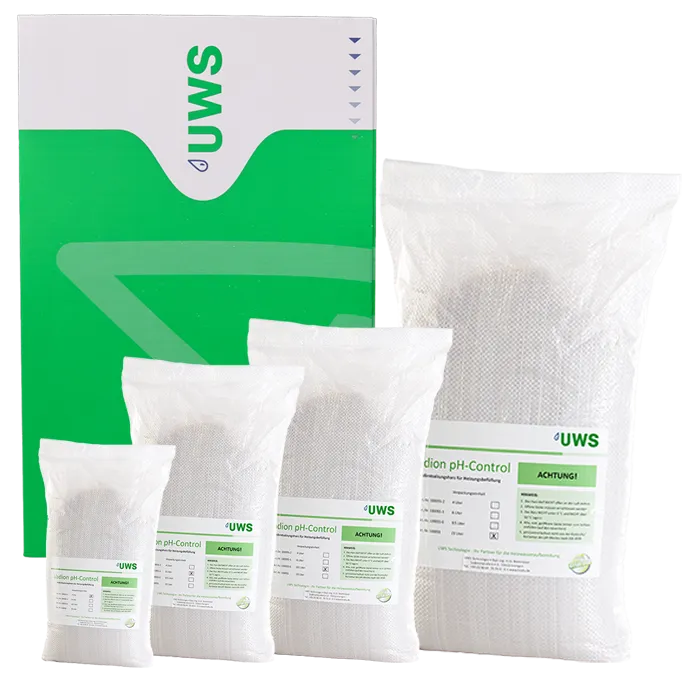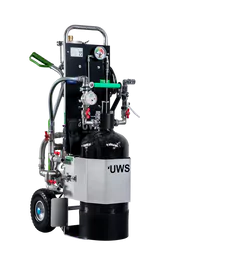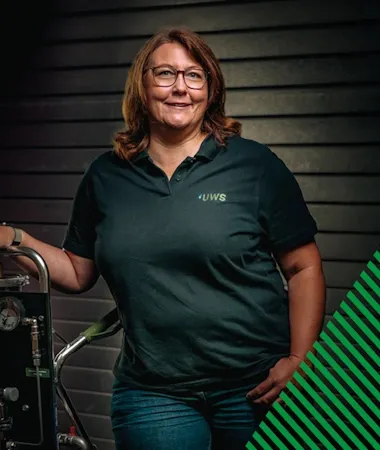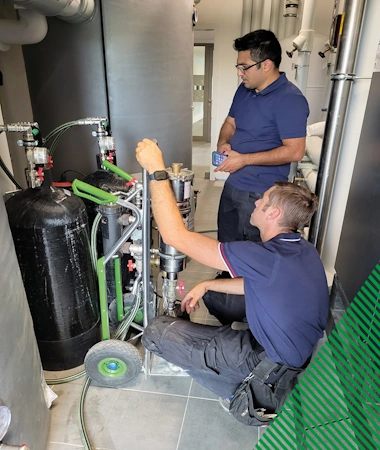
What is mixed bed resin and why is it so important?
A mixed bed resin is a combination of cation exchange resins and anion exchange resins. It removes almost all dissolved salts from the water and reduces the electrical conductivity to a minimum. As a result, limescale deposits or corrosive processes no longer occur in the heating system.
One cubic meter of water with 17 °dH contains around 300 g of limescale. Even in a detached house with just 350 liters of filling water, 100 g of limescale can build up in the heat exchanger – enough to cause expensive damage.
Advantages of our mixed bed resin at a glance:
- Effective demineralization – removes ions that lead to limescale, corrosion or conductivity problems
- Optimized pH value – automatically sets the correct pH value for heating water
- Environmentally friendly – no chemical additives, easy disposal with household waste
- Ready for immediate use – ideal for mobile desalination units and filling stations
- Compact & reliable – particularly suitable for the HVAC sector and domestic installations
- Complies with standards – Meets VDI 2035, ÖNORM H 5195-1 and SWKI BT 102-1



Areas of application of Vadion pH-Control:
- Filling and topping up heating systems
- Use in mobile mixed-bed cartridges
- Application range from 3 to 80 °C water temperature
- Protection of heat pumps, condensing boilers & solar systems
- Retrofitting in existing or new buildings
- Can also be used in bypass mode
How long does the mixed bed resin last?
This depends on the water consumption and the water hardness. At 10 °dH, 1 liter of resin is sufficient for about 100 liters of demineralized water.
Can I use Vadion pH-Control in any heating system?
Yes – it can be used universally, even with sensitive systems such as heat pumps or condensing boilers.
How do I know when the resin is exhausted?
The conductivity of the water increases – a digital measuring device such as the UWS WaterBoy indicates this reliably.



